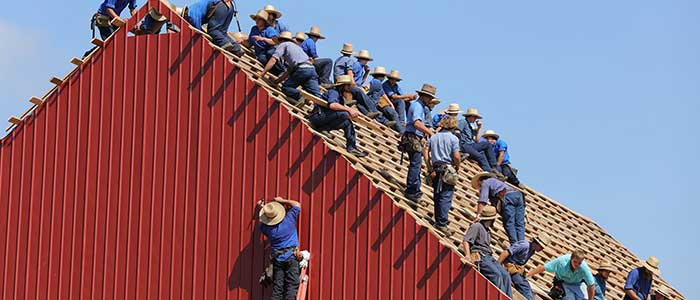Dashpivot Article – Fall Protection Systems
Fall Protection Systems
In this post, we will cover fall protection systems and the components of working at heights safety, so that you are better equipped for fall protection system compliance.

Falling from height is one of the deadliest occupational hazards, and it still claims almost 684,000 lives every year, according to the World Health Organisation. The cost associated with these cases is more than $176 billion USD per year for developed countries, both directly and indirectly. From skyscrapers to large industrial complexes of mining regions, companies are always tasked with providing safety for employees performing elevated work.
Keep reading as you get practical insights into safety protocols, equipment selection, implementation frameworks, and even technology solutions to make fall protection systems more manageable.
Why are Fall Protection Systems Important in the Workplace?
There are workplace settings where working at heights is a daily activity, and emphasising the workers' safety is essential. This is where fall protection systems play a very important role in safeguarding workers against the risk of working at heights or above ground.
These fall protection systems help prevent accidents like falls, trips, and slips from happening and provide restrictions to hazardous places.
Implementing these fall protection systems is not just about compliance but the very foundation of a safe, productive, and wholesome working environment.
These fall prevention, arrest, and restraint systems implemented in organisations can help reduce the likelihood of fall-related injuries. As a result, workers are protected while minimising downtime and the related costs of these hazardous workplace accidents.
Fall Protection System Types and How to Use Them
To use fall protection systems across various workplaces and operational environments, understanding the three types of fall protection systems and their subcomponents is crucial. Here are three types of fall protection systems and how they can be integrated into your safety protocols:
Fall Prevention Systems
Fall prevention systems are designed to eliminate the risk of falls by providing physical barriers or obstructions. Key components include:
Guardrails: These are upright barriers with top rails, mid rails, and sometimes toe boards installed around the edges of elevated work areas.
Safety Nets: Large mesh nets are stretched beneath or around work areas to catch individuals or falling objects and prevent impact with lower surfaces.
Hole Covers: Durable materials, such as metal, wood, or other synthetic ones, are designed to cover holes in floors, decks, or roofs that are marked to indicate their presence.
Fall Arrest Systems
Fall arrest systems are used to stop a worker’s fall and minimise injuries, and these systems comprise the following safety equipment and tools:
Full-Body Harnesses: A garment worn around the body, with straps over the shoulders, around the thighs, and sometimes the chest that provides a point for fall arrest forces.
Lanyards: These are connectors made of rope and wire rope webbing that link the harness to the anchor point and may include shock absorbers to reduce fall arrest forces.
Energy Absorbers: These are devices integrated into the lanyard or as a separate component that dissipate kinetic energy during a fall to reduce the force on the wearer.
Anchor Points: Secure locations that can support the prescribed safety factors to which the lanyard or lifeline is attached. Selecting the correct spot is critical, as these anchors must withstand the forces of a fall arrest.
Horizontal Lifelines: These are flexible lines installed between two anchor points that allow workers to move along a horizontal plane while attached.
Vertical Lifelines/Ropes: Lines that run vertically are arrested with a rope grab that moves up and down the line with the worker, which provides fall protection during ascent or descent.
These types of fall protection systems typically fall under the other category of working at heights fall related safety which is fall protection equipment, which you can read about here.
Fall Restraint Systems
Fall restraint systems prevent workers from reaching fall hazards by restricting their movement to safe areas, and they share similar components to fall arrest systems but are used differently. Here are some equipment and tools needed to restrain a fall:
Tether Lines: A type of lanyard that connects the worker’s harness or body belt to an anchor adjusted to prevent the worker from reaching a fall hazard.
Body Belts: These provide attachment points for tether lines or tool lanyards and are worn around the waist for work positioning or restraint; they are not used for fall arrests but for restraining a person in place.
Work-positioning systems: These types of systems allow a worker to be supported in a harness or belt while allowing both hands to be used freely and prevent a fall. Systems of this kind often include positioning lanyards or pole straps.
Anchor Points: The anchors are tie-off points for the fall restraint equipment, be it tether lines or body belts, and the purpose of an anchor point is that it must deny access to fall hazards. This is very critical to a properly functioning restraint system; an anchor point prevents workers from accessing the edges or openings through which they may fall.
How to Use Fall Protection Systems the Right Way
Fall protection systems only work if used correctly by the workforce. While workers are required to be trained and certified to work at height, a multi-disciplinary team will likely have varying levels of knowledge on fall protection systems. Thus, it’s essential to have measures to ensure everyone is correctly educated on the following fall protection systems in your workplace. Here are some useful tips organisations must benchmark to better protect their workers from falls:
Implement a Full Safety Plan
All workplaces that require fall protection systems need a full safety plan that includes fall protection protocols, and this plan should outline the types of fall protection systems suitable for different tasks, when and where to use them, and emergency response procedures. The plan must also be easily accessible and understood by all employees to promote a safety culture and compliance.
Conduct Daily or weekly Toolbox Talks
While a comprehensive safety plan is required, it is easier to train workers on fall protection systems through daily or weekly toolbox talks. To successfully hold toolbox talks on fall protection systems, leaders should assemble their team at the beginning of the shift or before height-related tasks to discuss essential topics such as load capacity calculations for fall arrest forces, proper harness fitting techniques with an emphasis on strap adjustments, and detailed anchor point evaluation procedures focusing on structural integrity and system compatibility.
Real-life examples and recent incidents should be used in the talks, keeping confidentiality while trying to enhance common mistakes and best practices.
Questions should be encouraged in the toolbox talks with experience sharing so that open learning and collaboration are fostered, and sessions become brief and workable towards reinforcing safety culture and empowering workers to give safety their priority on both individual and collective levels in their daily operations.
Implement Guidelines on Fall Equipment Selection
Organisations must provide their workers with the technical criteria in selecting the right fall protection equipment for any job. The guidelines should include the types of harnesses for each task, such as for construction or electrical work, the lanyard length or material (may it be rope, wire, or webbing) appropriate to the fall distance and work environment. Structural integrity and load capacity must also be considered when implementing these guidelines on equipment selection.
Conduct Fall Equipment Inspection Checklists
Organisations must also ensure that there are detailed inspection checklists for pre-use inspections of all fall-protection equipment, and these should include proper inspection for harness stitching for frays and lanyard integrity for cuts and abrasions. The safety mechanisms must also be tested to ensure anchor points are not compromised by any rust, some type of corrosion, or even damages. As with any safety inspections, workers must document these—noting the date, inspector name, designation, and any issues or findings found.
Fall Protection Systems and Organising Routine Simulation Drills
Organise routine simulation drills that workers can go through to simulate the setting up and use of fall protection equipment in controlled settings. These drills should simulate scenarios common to your workplace, such as working on scaffolding, rooftops, or near-edge work on bridges. Feedback after these drills may also be used to identify knowledge gaps and areas of improvement.
Set Maintenance and Replacement Protocols
Maintain and replace fall protection equipment with strict standards, and these can include rules governing cleaning and storing equipment so it is not damaged, conditions when equipment is withdrawn from service such as after an event or being damaged in the course of an inspection, and regular check-schedules for proper maintenance by a qualified individual.
All information implemented should also be documented correctly, and whenever fall protection systems are used regularly in the workplace, there will be many future opportunities to reuse the information within these documents.
Here is an example of a toolbox talk detailing fall protection for your organisation to use:

Hold a toolbox talk fall protection systems with this free form
Improve your toolbox talks on fall protection systems with purpose-built forms
Toolbox talks are a great way to ensure your team is using fall protection systems correctly in the workplace, and a good toolbox talk is worth recording for future reference or reuse. By using a toolbox talk fall protection template, you can educate your team better on safety issues related to fall protection systems in the workplace. This form has fields to record all the necessary information, including existing fall hazards on site, additional fall hazards identified by team members, current fall protection measures, and the signatures of meeting attendees.
The Bottom Line on Fall Protection: Every Worker Goes Home
The global studies on workplace safety have consistently shown that organisations with comprehensive fall protection systems in place experience a significant reduction in height-related incidents and contribute to an indirect culture of safety beyond mere compliance by saving human lives. As we look to the future of workplace safety, the integration of digital safety management platforms will offer unprecedented opportunities to enhance fall protection programmes through features such as real-time equipment tracking, digital audit trails, and automated safety alert systems that work together to create a safer environment.
Modernise your fall protection programme using a digital safety management solution that can overhaul your height safety protocols and create a safer working environment so that every worker, regardless of role or location, goes home to their family safely each day.

Safe Work Method Statement for Roofing template
Document and maintain good roofing safety practices and procedures using this flexible roofing safe work method statement.

Job Hazard Analysis for Working at Height template
Keep your fear of heights in check with this working at heights Job Hazard Analysis template.

Working at Heights Risk Assessment template
Improve working at heights safety by following and completing this working at heights risk assessment template.

